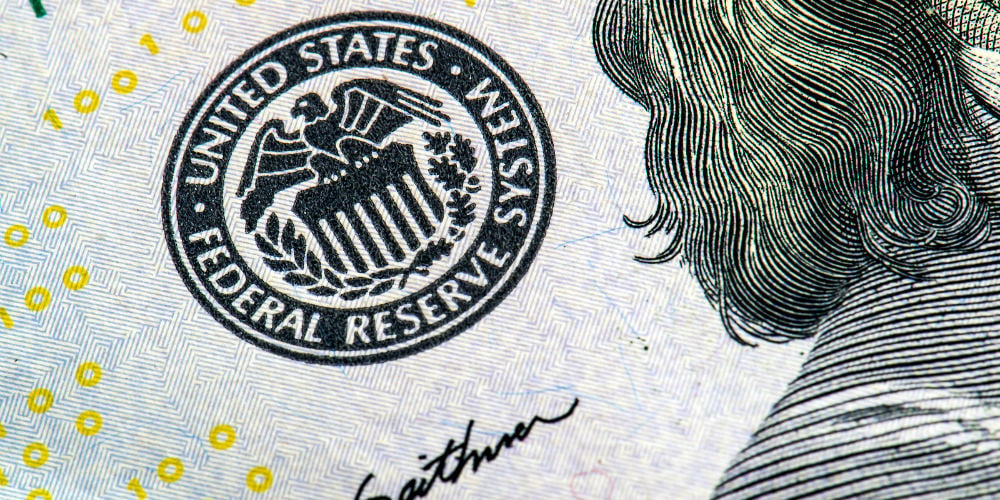FedNow and the future of banking

Wire transfers, cross-border payments, and ACH settlements are about to change – and in many ways, they already have! The launch of FedNow is a milestone that shifts the tides of the financial industry. The implications of this shift are profound and wide-reaching; what is all but lost in the news cycle is a full admission by the central bankers that the electronic dollar is nearing the end of the line. It is time for industry-wide adoption of real-time, streaming, digital dollars. In a world where global networks like Bitcoin, Ethereum, and USDC (and more recently, Solana, Hedera, and XRP) have proven the potential of distributed ledger technology, bankers, large and small alike, can no longer afford to ignore the reality of ‘streaming money.’
As a starting point, FedNow is the Federal Reserve’s response to the growing demand for real-time payments in the United States. But it’s much more than that. It’s an acknowledgment that the traditional financial system, which has been the primary facilitator of monetary transactions for a hundred years, is outdated and risks being displaced by a quickly growing, 1.5 trillion-dollar industry of digital assets, inflation hedges, and borderless, low-cost, high-speed transactions. FedNow isn’t a tokenized central bank digital currency (CBDC), but it could be another step toward a state-sanctioned, Fed-issued, digital dollar.
The list of FedNow participating entities is growing quickly, as to be expected in an economy where consumers have been granted instant access to everything from their favorite TV series or movie to on-demand ridesharing, and even order-ahead fast food! This rapid adoption of the Fed’s digital settlement service signifies a willingness to adapt to the changing times and embrace ‘at least some’ of the technological advancements that are reshaping the financial landscape. This is understandable, too given that an average Amazon Prime subscriber will spend more time waiting for her check to clear than for the package she orders tonight to arrive on her front doorstep. The central bank’s real-time payments system will likely improve average transaction speeds while failing to address the underlying problems of inflation and interchange fees, and will most certainly increase opportunities for fraudsters.
Streaming money solutions
We talk about ‘streaming money’ and ‘money-data’, and ‘digital dollars’ quite a bit, which tends to lead to conversations where our counterparts either applaud our prescience and nuanced understanding of macro-economics and the inner-workings of financial institutions, or they look at us side-eyed and go on with their day – manually counting money in and out of vaults and teller drawers as if the financial world remained locked in amber. We get it, the disruption of streaming money inspires too many opportunists and snake-oil salesmen, and, just like money movement, the speed of scams and fraud has also increased by several orders of magnitude.
Before you write us off as members of the tin-foil hat club, recall that there used to be such a thing as Microsoft Encarta. What a leap forward from the traditional, thirty-some volume annual editions of Encyclopedia Britannica! The executives at MS who centrally planned, and professionally curated Encarta never even considered the chance of a single, decentralized repository of information which is continually updated by individuals who have nothing to gain except bragging rights and their own intrinsic motivation to always make the best information available to everyone, and at zero cost. In 1993 Encarta was on the bleeding edge of technology, but finally decommissioned in 2009 – ironically, the year the first Bitcoin was mined.
To us, ‘streaming money’ best describes the transformation occurring in the financial industry. Real-time, on-demand transactions facilitated by digital currencies and blockchain technology without the delays, intermediaries, and never-ending interchange fees. Streaming money is all about instant access to your funds, sending and receiving money anytime, anywhere, without the constraints of traditional banking hours or geographical boundaries. This paradigm shift is altering the way we perceive relevance in various aspects of finance.
International impacts
If you’ve ever attempted an international payment, it’s likely something you want to avoid. Of course, if you wake up one morning to find yourself in a different country (we hope it won’t be a complete surprise!) you’ll be glad your credit union offers the service. In those circumstances, you’ll have a lot more to worry about than the high fees, delays, and complexity of receiving your own money on another country’s soil. This isn’t a hypothetical scenario; just ask anyone who has come to America to build a better life what it’s like to send money back home to support their families and loved ones.
This doesn’t just impact individual consumers, it’s also a substantial problem in the business world. Many business-to-business (B2B) purchases cross borders, involving multiple currencies, international regulations, and intermediary banks. This international trade is crucial for the thriving of global economies and commerce, yet for most businesses, payments on even the most straightforward overseas purchases are cumbersome, slow, and expensive.
Many times, these commercial transactions involve large sums of money and complex financial agreements. The traditional settlement processes are labor-intensive, with multiple parties involved in verifying and reconciling transactions. Given the human element here, including supply chain management, balancing accounts, and accounting for the thousands of shipping containers lost along the way, it becomes readily apparent how tangible object tokenization, smart contracts, and real-time, low-fee international settlements will all coalesce to improve archaic processes and eliminate waste.
Embracing the new era
As with anything else, cryptocurrency isn’t a one-stop-shop. There are many technologies represented in the digital asset space, and many use cases. Once you start exploring, you’ll find everything from Bitcoin, or ‘digital gold’ as it is affectionately called by BTC loyalists, to non-fungible tokens (NFTs) granting you ownership rights to digital art, and ‘memecoins’ branded with a cartoon Shiba Inu, originally created as a joke, now with a market cap of over 10 billion dollars!
It’s not so important where you start, but that you start. As a community financial leader, your members expect you to educate them on financial matters, like how to safely acquire digital assets, and where they can store them for safekeeping – perhaps in your credit union’s very own digital vault?
FedNow’s launch and the disruptive potential of distributed ledger technology highlight the necessity for adaptation in the financial landscape. Local banks and credit unions must bridge the gap between traditional finance and decentralized networks. Embracing these innovative technologies in a responsible, regulated, revenue generating manner will ensure relevance and sustained prosperity for your members and your institution.
As savvy consumers, business leaders, and innovative institutions increasingly turn to more efficient technologies for their financial needs, your local credit union will need to adapt and evolve to remain relevant. The future of finance is already a digital one, and those who embrace it will be well-positioned to thrive in this new era of streaming money. Drop us a line and let’s start the journey together!





